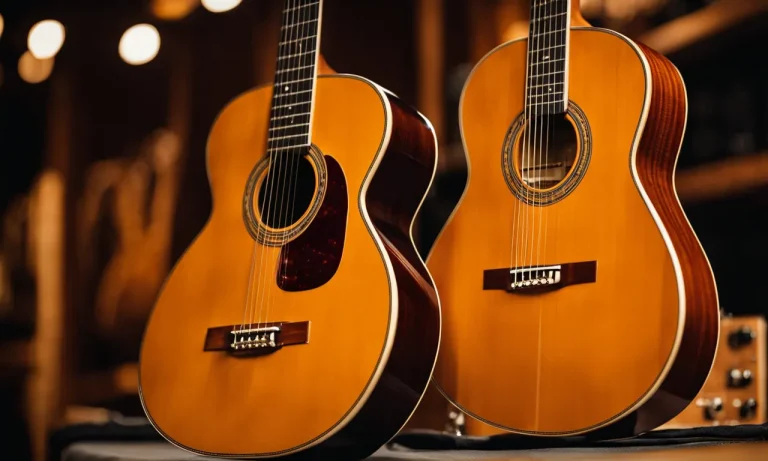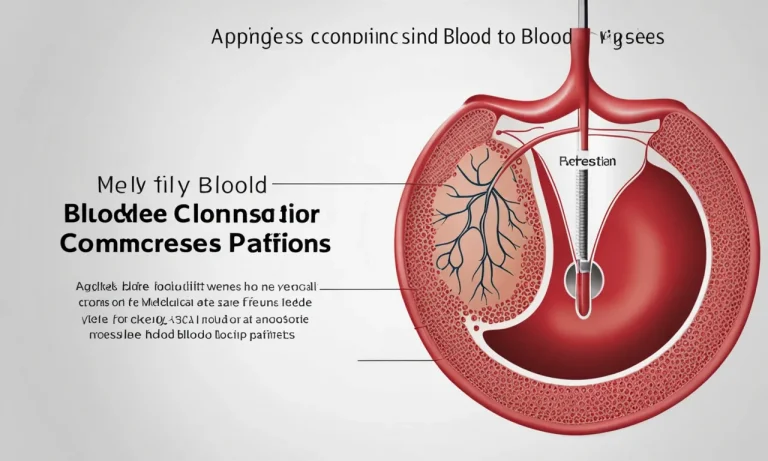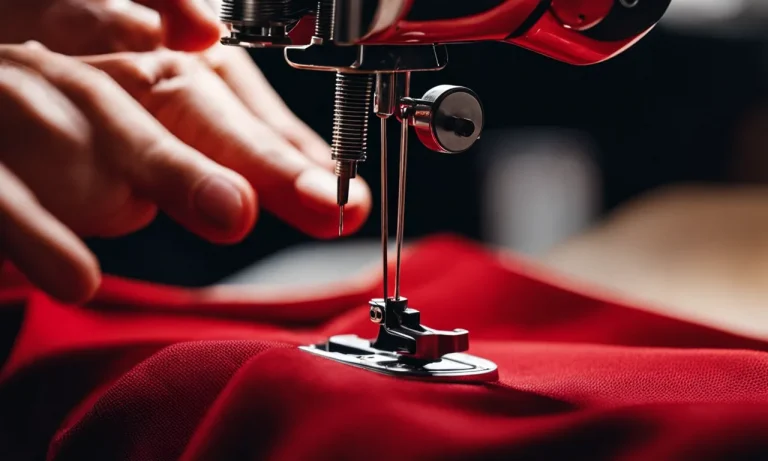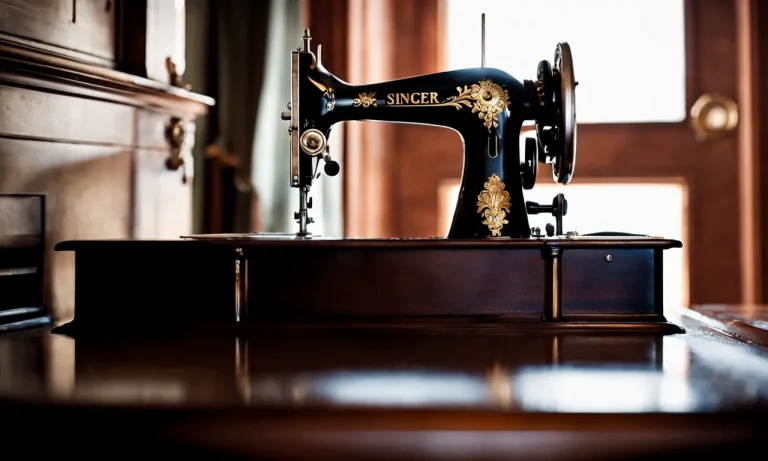What Gauge Needle Should Be Used For Blood Donation?
Giving blood is an extremely important act that saves countless lives every day. If you’re considering donating blood for the first time, one common question is: what gauge needle is used? The gauge of the needle used can make a big difference in your donation experience and success.
If you’re short on time, here’s a quick answer to your question: the most common needle gauges used for blood donation are 16 gauge and 17 gauge.
Typical Needle Gauges for Blood Donation
When it comes to blood donation, using the right gauge needle is crucial for a smooth and successful process. The gauge of a needle refers to its diameter, with a smaller gauge indicating a larger needle. In blood donation, two common needle gauges are typically used: 16 gauge and 17 gauge.
16 Gauge
A 16 gauge needle is larger in diameter compared to a 17 gauge needle, meaning it has a wider opening. This larger size allows for a faster blood flow during the donation process. Typically, a 16 gauge needle is used for regular blood donations, where a standard amount of blood is collected.
Using a 16 gauge needle for blood donation has several advantages. First, it reduces the time required for the donation, making the process faster and more efficient. Second, it minimizes the chances of blood clotting or clogging within the needle, ensuring a smooth flow of blood throughout the donation.
It’s important to note that while a 16 gauge needle may cause a slight temporary discomfort during insertion, the actual blood donation process should be relatively painless. The skilled healthcare professionals who administer the needle are trained to minimize any discomfort experienced by the donor.
17 Gauge
A 17 gauge needle, although slightly smaller in diameter than a 16 gauge needle, is still commonly used for blood donation. It is often used for specific cases where a smaller needle is preferred or required.
For example, individuals with smaller veins may find a 17 gauge needle more comfortable during the donation process.
While a 17 gauge needle may result in a slightly slower blood flow compared to a 16 gauge needle, it is still an effective choice for blood donation. It allows for the collection of a standard amount of blood and is generally well-tolerated by donors.
Ultimately, the decision to use a 16 gauge or 17 gauge needle for blood donation depends on various factors, such as the donor’s comfort, the size of their veins, and the discretion of the healthcare professional administering the donation.
For more detailed information on blood donation and the needle gauge selection process, you can visit the American Red Cross or the Centers for Disease Control and Prevention websites.
Key Factors in Selecting Needle Gauge
When it comes to blood donation, selecting the appropriate needle gauge is crucial to ensure a comfortable experience for the donor, optimize blood flow rate, and increase the success rate of venipuncture. Let’s explore the key factors that should be considered when choosing the right needle gauge.
Donor Comfort
One of the primary factors in selecting a needle gauge for blood donation is the comfort of the donor. A smaller gauge needle, such as 20 or 21 gauge, is generally preferred as it causes less pain and discomfort during the venipuncture process.
Donors often feel more at ease with a smaller needle, making the overall donation experience more pleasant for them.
Blood Flow Rate
The blood flow rate is crucial in blood donation procedures, as it determines how quickly the required amount of blood can be collected. Larger gauge needles, such as 16 or 17 gauge, allow for a higher blood flow rate due to their wider diameter.
This can be advantageous in situations where time is a factor, such as emergency blood transfusions. However, it’s important to find a balance between blood flow rate and donor comfort to ensure the best possible experience for both the donor and the recipient.
Venipuncture Success Rate
The success rate of venipuncture, which refers to the ease of accessing the vein and drawing blood, can also be influenced by the needle gauge. Smaller gauge needles are generally easier to maneuver and have a higher success rate in achieving a successful venipuncture.
However, healthcare professionals should consider the donor’s vein condition and choose a needle gauge that strikes a balance between success rate and donor comfort.
It’s important to note that the appropriate needle gauge may vary depending on individual factors such as the donor’s age, weight, and vein condition. Healthcare professionals should always assess these factors and make an informed decision when selecting the needle gauge for blood donation procedures.
For further information on blood donation procedures and needle selection, you can visit websites like the American Red Cross (www.redcrossblood.org) or the World Health Organization (www.who.int).
What to Expect with 16 Gauge vs 17 Gauge Needles
16 Gauge Needles
When it comes to blood donation, the size of the needle used can make a difference in the experience for both the donor and the healthcare professional administering the donation. A 16 gauge needle is slightly larger in diameter compared to a 17 gauge needle.
This means that the 16 gauge needle has a bigger opening, allowing blood to flow more freely. As a result, the donation process with a 16 gauge needle may be slightly faster compared to a 17 gauge needle.
While the larger size of the 16 gauge needle may sound intimidating, it is important to note that the discomfort experienced during the insertion of the needle is typically minimal. The healthcare professional will use techniques to minimize pain, such as numbing the area with a local anesthetic or using a smaller needle to first create a puncture before inserting the larger gauge needle.
17 Gauge Needles
A 17 gauge needle is slightly smaller in diameter compared to a 16 gauge needle. Although it has a slightly smaller opening, it is still suitable for blood donation. The use of a 17 gauge needle allows for a smooth and efficient blood flow, ensuring a successful donation process.
While the 17 gauge needle may take a bit longer to collect the desired amount of blood compared to a 16 gauge needle, the difference in time is usually minimal and may not be noticeable to the donor. It is important to remember that the comfort of the donor and the ease of the donation process are top priorities, and healthcare professionals are trained to ensure a positive experience for blood donors.
Both the 16 gauge and 17 gauge needles are commonly used in blood donation centers, and the choice of needle gauge may depend on various factors such as the donor’s vein size, the blood collection method being used, and the preference of the healthcare professional.
For more information on blood donation and the different needle gauges used, you can visit the American Red Cross website. They provide comprehensive information about the blood donation process and can address any specific concerns or questions you may have.
Who Might Get a Different Needle Gauge
Children and Teens
When it comes to blood donation, children and teens are a special category. Their veins tend to be smaller and more delicate compared to adults. Therefore, they may require a different gauge needle to ensure a successful donation process.
Medical professionals typically use a smaller gauge needle, such as a 23 or 25 gauge, to minimize discomfort and reduce the risk of complications during blood collection in younger donors. These smaller needles are designed to be less invasive and easier to handle, making the experience more positive for young donors.
Elderly Donors
Elderly individuals often experience changes in their veins as a natural part of the aging process. Their veins may become more fragile, narrower, or less elastic, making it challenging to find a suitable vein for blood donation.
In such cases, medical professionals may opt for a different needle gauge, typically a larger one, to increase the chances of successful venipuncture. Using a larger needle, such as an 18 or 19 gauge, can help overcome the challenges posed by aging veins and ensure that the blood donation process is as smooth and comfortable as possible for elderly donors.
People with Small Veins
Some individuals, regardless of age, may have naturally small veins, making it difficult for healthcare providers to insert a needle for blood donation. In such cases, a different needle gauge may be necessary to achieve successful venipuncture.
A smaller gauge needle, such as a 23 or 25 gauge, is often used to accommodate the smaller vein size and minimize any potential discomfort. The goal is to find a balance between a needle size that is large enough to collect an adequate amount of blood and small enough to prevent excessive pain or damage to the vein.
It’s important to note that the decision to use a different needle gauge is made by healthcare professionals based on individual circumstances. They take into account factors such as age, vein size, and overall health to ensure a safe and comfortable blood donation experience for all donors.
For more information on blood donation and the use of different needle gauges, you can visit websites such as Red Cross Blood or Mayo Clinic.
Tips for an Easier Blood Draw Experience
When it comes to blood donation, some people may feel anxious or nervous about the process. However, there are several ways to make the experience more comfortable. Here are some tips to help you have an easier blood draw experience:
Hydrate Well Beforehand
One important tip is to make sure you are well-hydrated before donating blood. Drinking plenty of fluids, especially water, can help plump up your veins and make them easier to find. It also helps to keep your blood flowing smoothly, which can result in a quicker and less painful blood draw.
Apply a Warm Compress to the Draw Site
Another helpful tip is to apply a warm compress to the draw site before the blood donation. This can help dilate the blood vessels and make it easier for the phlebotomist to locate a vein. A warm compress can also help to numb the area slightly, reducing any discomfort during the blood draw.
Do Muscle Tensing Exercises
Engaging in muscle tensing exercises before the blood draw can also be beneficial. Squeezing and releasing your hand or making a fist can help increase blood flow to the arm, making it easier for the phlebotomist to find a suitable vein.
Additionally, these exercises can help distract you from any anxiety or discomfort during the blood draw.
Communicate Your Concerns and Preferences
Lastly, it’s essential to communicate any concerns or preferences you may have to the phlebotomist. They are trained professionals who are there to ensure your comfort and safety. If you have had a positive experience with a specific gauge needle in the past, don’t hesitate to mention it.
They may be able to accommodate your request or provide you with information about the needle gauge they typically use.
Remember, every person’s blood draw experience can vary, but implementing these tips can help make the process more comfortable for you.
Conclusion
In summary, 16 and 17 gauge needles are the most common sizes used for blood donation. While a 16 gauge draws blood faster, a 17 gauge may provide more comfort. Factors like your vein size, blood flow, and comfort preferences help determine the ideal needle gauge for you.
With preparation strategies and honest communication with the staff, you can make your blood donation as smooth and painless as possible, regardless of needle size. Thanks for learning more about this topic, and happy donating!







